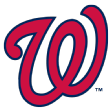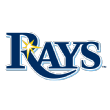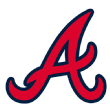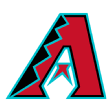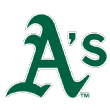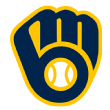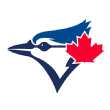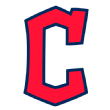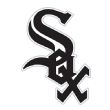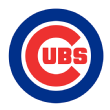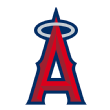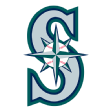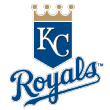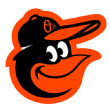The good, the bad ... and the Tigers: Ranking all 30 MLB teams based on their 2019 goals

Before the 2019 MLB season began, we tried to define what "success" could look like for each of the 30 teams. Obviously, winning a World Series would count as successful no matter the team, but baseball's rewards aren't nearly that one-dimensional. Teams enter seasons with different goals and priorities and advantages, at different stages of their historical narratives and having made different investments for the next six or seven months. Further, the moments a fan or player remembers 50 years later might well come out of nowhere and have little to do with a World Series parade.
This is a brief exit interview for the 30 team seasons we just watched. Mostly, we'll be keeping it simple, answering a variation of one basic question: If you had told a team's front office, its uniformed personnel, its owner and its fans that this would happen, would they have embraced that outcome or spun again?
(One note for this season, when tragedy and scandal sometimes pushed aside the more frivolous activity on the field: We are limiting this survey to the baseball aspects of each team's season -- with one notable exception.)
The successes that felt great
The year they won their first World Series
If you had a magic baseball wand and wanted to generate the most happiness a single season could produce, you'd start by picking a World Series champion that hadn't won it all in at least a generation. The first title for a fan isn't merely more satisfying than any that follow. The first is life-changing. It rules out curses. It tells you, the fan, that even if death is surely coming for us all, it can't truly defeat you because you've already lived. It is, in many ways, infinite. It fills up every crack with the reassurance that, yes, indeed, it could happen for you again -- because it has happened before.
This was the right year for Washington to win it. Last year would have been right, too, but next year would have been wrong. The story of this era of the Nationals began in 2009 and 2010, when the team drafted Stephen Strasburg and Bryce Harper, the two most famous draft prospects in history. Those two drafts set up nearly a decade near the top for Washington baseball: eight consecutive winning seasons, four division titles and five playoff appearances -- but before this year, nothing but frustration in the postseason.
Harper left last winter, and Strasburg (and Anthony Rendon) might this winter. Without a World Series, all those playoff appearances would have been remembered as frustrating and incomplete, hardly worth the hype. But with a World Series, all those playoff appearances are reinforcement of this team's status as one of the great teams of the era. This was the last chance for the Nats to turn all that work into something they could hold on to instead of having it crumble into dust.
Also, these were no generic World Series champs. The Nationals' comeback from last place in May will be cited in fun facts for a half-century. Their path to the World Series -- the most difficult in history, by some measures -- will be the standard against which future playoff teams are judged. They were giant slayers, and there's a good chance history won't forget it.
The year Tyler Glasnow and Austin Meadowsturned the Chris Archertrade into a historically imbalanced snookering
Here's the bad news for the Rays: The Yankees won 103 games and didn't look fluky doing it. The Rays have not only never won 103 games, they've never won more than 97. Until they do, it's fair to wonder whether it's possible for any team, no matter how smart it is, no matter how innovative, to win 100 games while spending one-third of what the Yankees do and selling fewer tickets, even in its best seasons, than any other American League team. Maybe the Rays can -- they came close, and an exceptional farm system is still pumping out hits -- but they haven't yet, which means they need the Yankees (and Red Sox) to stop winning 100 games, or else they must accept the bleak limitation of wild-card entries.
But here's the good news: The Rays won 96 -- we whiffed when we said before the season that it was hard to imagine them winning 95 -- and took the wild-card game, then came within a game of knocking off the 107-win Astros in the division series. If the postseason had started two weeks later, the Rays might well have had Glasnow and Blake Snell at full strength, and who knows if Houston would have survived that.
When, as kids, we imagine finding a genie who will grant us three wishes, we all default to figuring out the right way to ask for more money. But the Rays subverted that: They asked the genie to make everything they want in trade cost less. They built the best bullpen in the game out of pitchers almost nobody had heard of a year ago. They made the trade of the season, getting reliever Nick Anderson from the Marlins at the deadline. Glasnow (a Cy Young candidate before a May injury) and Meadows (one of the 20 best hitters in baseball) were so good that they probably got Pirates GM Neal Huntington fired.
It can be obnoxious describing the Rays' acquisitions as only a series of controlled costs, but with Anderson, Glasnow, Meadows, Yandy Diaz, Emilio Pagan, Oliver DrakeandTommy Pham-- all stolen in recent trades -- you don't even have to look at how much they're paid to know the Rays are doing something in their player acquisitions. That's the core of a really good team -- maybe a 100-win team.
The year Ronald Acuna and Ozzie Albiessigned extensions
As the Phillies might be showing us, tanking is no guarantee of a worthwhile reward. The Braves' multiyear rebuild -- 2015 to 2017, concurrent with the Phillies' -- led to a division title in 2018, but it wasn't obvious that it would lead to a permanent powerhouse. The Braves projected, by some systems, to finish fourth in an extremely competitive National League East, and if the ascendant Phillies developed a bunch of their prospects and spent their big-market money, the Braves seemed in danger of being left behind.
Well, those fears are no more. The Braves won the NL East for a second year in a row, with 97 wins, the most by the club since 2003. The young duo at the top of the lineup -- second baseman Albies and outfielder Acuna -- signed extensions that carry through 2027 and 2028. Acuna could have 400 homers by the time the Braves need to Talk About The Future with him again. The over/under on Hall of Fame careers produced by Albies and Acuna is 1, and if they go, they're wearing Braves hats on the plaque.
The year they hit 307 home runs
We figured -- as did Cleveland -- that the Twins' ceiling would be a good season with a lot to build on. Instead, the Twins came within a win of the franchise record and spent all but seven days in first place. Plus, there was a lot to build on! They had a new manager and a new pitching coach, each one an unconventional hire in some ways and each one fantastically successful in year one. Miguel Sano and Byron Buxton each had his best season and could be aging into his prime with three years remaining until free agency. Max Kepler did, too, and he signed an extension that will take him through 2024. Tyler Duffey was this year's best reliever in the second half, helping erase the shame of tradingRyan Pressly (last year's best reliever in the second half) to Houston. Mitch Garver was, I would argue, the most shocking home run story of this home run season, with 31 homers in 311 at-bats as a catcher.
Perhaps most importantly, the Twins got a team nickname. The great teams we remember 50 years later are often the ones with nicknames. If the Twins win the World Series next year, Rocco Baldelli will be right: I don't think anybody will ever forget the Bomba Squad.
The year Jack Flahertybecame Bob Gibson in the second half
On the last weekend of the first half, the Cardinals were under .500 and in third place. Paul Goldschmidt, the ink still smudge-able on his five-year contract extension, was hitting .249/.337/.417, barely league average and considerably worse thanCarson Kelly, the young catcher the Cardinals traded to get him. Yadier Molina was having his worst offensive season since he was 23 and was injured to boot. Matt Carpenter, the Cardinals' most reliable power hitter the previous four years, was hitting a punchless .216 and was about to hit the injured list. The Cardinals' starting pitchers ranked 24th in the majors in WAR, and their closer had just been lost for the year.
If their turnaround wasn't quite as dramatic or conclusive as the Nationals', it was nevertheless the sort that turned a bottom-of-this-list season into one near the top. Flaherty emerged as a genuine ace -- probably one of the 10 best starters in baseball going forward -- and Goldschmidt rebounded with a second half that was, if not quite up to his previous standards, strong evidence that he hadn't aged like Dorian Gray on his 31st birthday. Molina returned to hit like he had in his late 20s, Carlos Martinez took over as closer and blew only one save the rest of the way, and even if Carpenter never bounced back, the player who replaced him --Tommy Edman-- extended the Cardinals' streak of turning some non-prospect late-round pick into an above-average regular. In 92 games, Edman was about as good, by WAR, as Astros phenom Yordan Alvarez.
I wouldn't say that this turnaround convinced us all that the Cardinals are a great team -- they were the worst postseason team to make the division series round -- or that they're poised to repeat next year. But the Cardinals had been pretty good the previous three years and hadn't made the playoffs. Sometimes you just need to make a sale, to receive a nice compliment, to have a good day so your brain can remember that it knows how to get from here to there.
The year everybody got hurt but the Yankees somehow got better
Every year there's a team that can be explained only bythe story of the Chinese farmer, which, in brief, goes like this: Farmer's horse runs away. His neighbors all say, "Awww, what rotten luck." Farmer says, "We'll see," and the next day his horse returns, bringing seven wild horses back with it! "What great luck!" his neighbors say, and the farmer says, "We'll see."
If third baseman Miguel Andujar hadn't been injured early in the season, it seems pretty unlikely that Gio Urshela's breakout -- as a 27-year-old who had been in Triple-A, with no pedigree and recently on waivers -- would have happened. If Giancarlo Stanton hadn't been injured, I doubt Mike Tauchman -- who produced more WAR than Manny Machadoin barely half the playing time -- would have gotten a real look on the Yankees. But for injuries, Cameron Maybin wouldn't have had the best offensive season of his career.DJ LeMahieu wouldn't have started every day and emerged as an MVP candidate. Mike Ford wouldn't have made his major league debut (and, in limited time, hit like Aaron Judge).
The Yankees won 103 games, hit 306 homers and won their first division title since 2012. As a teaser for next year, they saw Luis Severino return with his full arsenal late in the season. They did this all in a year when seemingly every week brought at least two season-ruining injuries, which not only didn't ruin the season but also, in totally unanticipated ways, made it even more memorable.
The year they barely tried and found a playoff race
The Diamondbacks spent most of the year as the .500est team in history-- 31 days at .500 on the dot, including a midsummer run of hitting it almost literally every other day -- but it was one of the most satisfying .500s ever. After seemingly punting the season in the winter (by trading Goldschmidt), they ended up getting more WAR from the return (Kelly and Luke Weaver) than Goldschmidt produced. Then, while seemingly giving up in late July (by trading Zack Greinke), they added two pretty good starters to their rotation, went 31-22 the rest of the way, stayed alive in the wild-card race well into September and ended up with 85 wins, three more than in 2018. The D-backs did this while improving their minor league system from 25th to fifth, according to FanGraphs' farm value rankings. They saw Ketel Marte develop into a genuine superstar, a power-hitting, multiposition WAR monster who didn't turn 26 until after the season ended.
It was frustrating, both before and during the season, to see the Diamondbacks' brass show so little interest in pushing for a playoff spot, and that posture can certainly be debated, but few recent teams have so successfully rebuilt in so little time without getting worse in the interim.
The successes that felt a bit disappointing
The year they lost in the NLDS
I keep saying it, but I think it keeps being true: If the Dodgers eventually win a World Series in this seemingly never-ending competitive window they've opened, all these postseason losses will get retconned to their benefit. Instead of being seen as grave disappointments, the Dodgers' October omnipresence will prove that they were the team of this era, the powerhouse that dominated every regular season for a decade or more and occasionally won a World Series. They just have to, you know, occasionally win a World Series, and your assessment of this season, like the ones that preceded it, depends on your faith that they eventually will.
This was probably the best Dodgers team in history. Their third-order winning percentage at Baseball Prospectus -- a measure of offensive, defensive and pitching strength that tells us more about a team's talent than record alone -- was the third best since at least 1950. They set a franchise record for wins, with the second-best offense in Dodgers history (by OPS+) and the third-best pitching in Dodgers history (by ERA+). They did what the powerhouse Yankees of the previous decade always struggled with -- incorporating new rookies -- and ended the season with one of the five best farm systems in baseball, even after the debuts of Gavin Lux, Will Smith, Matt Beaty and Dustin May. They have so many good players that I'm nearly certain you could split this franchise in two and have two winning teams. It's a total triumph of team building.
I think they'll win a World Series someday.
9. Oakland A's
The year Mike Fiersthrew a no-hitter
From 2015 to 2017, the A's finished in last place and drew a miserable 1.6 million fans per season. In the past two years, they've won 97 games each season, made the playoffs each season and done it without preemptively trading any of their young and likable stars. In 2019, they spent more than $100 million on players for the first time -- more than $20 million more than their previous highest payroll. For that, over the past two seasons, they've drawn ... 1.6 million fans per season.
There's a sadness that follows the A's. It's the attendance, partly. It's the fact that every fan expects the best players to be traded away. It's the postseason: They lost the wild-card game this year, and Billy Beane's A's have now made the playoffs 10 times and won only one postseason round. But underneath that sadness, what a season: Ace Sean Manaea and the two best pitching prospects --A.J. Puk and Jesus Luzardo, both major-league-ready -- were injured early, and first-half ace Frankie Montas got popped for PEDs, yet the A's again patched together a successful staff from pitchers you swear wouldn't stand a chance anywhere else. (The last pitcher to have a strikeout rate lower than Brett Anderson's and an ERA+ higher than Anderson's was Mark Buehrle a decade ago.)
By September, Manaea, Puk and Luzardo were in Oakland, Montas had served his time, and one could really imagine a great Oakland rotation next year. You don't have to imagine the great offense or the great defense, as those are already established.
The year they came back
Two things, one good and one bad, will make these Brewers more memorable than the typical wild-card-and-out team. The first was that they had one of most shocking September comebacks of the division era, jumping from 5% playoff odds to 97% playoff odds in 17 days, improbably coinciding with the sudden loss of their best player to a foul ball off the knee. The second was that Josh Hader blew a two-run lead to Washington in the wild-card game. That shocking turnaround was a load-bearing wall in the narrative Washington built as never-out comeback kids. The Brewers will play the Ralph Branca role in the Nationals' story.
This season marked the first time the Brewers made the playoffs in back-to-back seasons since the early 1980s and the most wins they've had in consecutive seasons since the late 1970s, so this is arguably the golden age of modern Brewers baseball. But it never felt like something big was happening this year, and it doesn't feel like something big was growing, either. The second- and third-best position players, Yasmani Grandal and Mike Moustakas, were playing on one-year deals and will now presumably move on. The pitching staff is still underdeveloped, and the September charge was dependent on generic relievers getting hot at the right time. The Brewers outscored their opponents by only three runs. Their farm system produced one last pot of gold --Keston Hiura, an offensive marvel -- but is now empty, perhaps the worst in the game. Their hitters are old.
Those are concerns for next season. This year, though, Christian Yelich got naked, Hiura found his power stroke, the Cubs collapsed and the Brewers made the playoffs. That's a good six months.
11. Houston Astros
The year they lost the World Series
The Astros set a franchise record with 107 wins, had the best third-order winning percentage since at least 1950, had the seventh-best offense of all time by OPS+, had the 20th-best pitching staff ever by ERA+ and fielded as much talent as the nine worst teams in baseball combined. Alvarez was the second-best rookie hitter ever, Justin Verlander and Gerrit Cole raced each other for the AL Cy Young Award, and Alex Bregman was the league's best hitter in the second half, which could all result in the Astros sweeping the postseason awards. Their bullpen was great, their defense was great, they added Greinke, and even the "disappointing" player seasons were encouraging in their own ways: Jose Altuve started slow but had a huge second half, Carlos Correa missed time but had his best season on a per-PA basis, Wade Miley pitched like an All-Star for five months, etc. Everything went perfectly -- until they won the ALCS.
It's impossible to separate the Astros' on-field season fromtheir off-field controversy,because at the heart of it is whether they can put everything in the preceding paragraph in perspective. When their assistant GM loudly gloated at three female reporters about having taken advantage of a domestic violence situation to acquire a better closer -- and when the organization rallied around him and baselessly attacked one of the reporters -- it suggested that the Astros think the baseball success actually matters more. That they actually believe that winning baseball games is an end and that baseball is more important than caring about other people's safety. Obviously, it's not -- baseball is just play -- and it's heartbreaking that somebody could devote so much passion to such a misguided idea. A few Astros fans told me that week that they were no longer sure they could root for their favorite team. No other team's fans told me that this year, no matter how few games their team won.
12. San Diego Padres
The yearFernando Tatis Jr. became the most exciting player in the game
Other than the Tigers, no team underperformed its preseason ZiPS projections by more games than the Padres, who looked like a dark horse and ended up with 70 wins. The Padres were worse than the Orioles in the second half, Eric Hosmer and Machado combined for fewer WAR than (scanning for just the right name) Hanser Alberto, and the manager got fired -- we have an unofficial rule of thumb that it's not a good season if the manager gets fired -- but danged if there wasn't a lot to love in this bridge year. The Padres finished the season with four good starting pitchers 26 or younger (including the already ace Chris Paddack),Kirby Yates had one of the best relief seasons in history, corner outfielders Franmil Reyes and Hunter Renfroe each had unexpectedly good first halves (Reyes netted the Padres elite outfield prospect Taylor Trammell in a July trade), and Tatis was the fourth-best 20-year-old in the past 100 years.
Don't undersell that last one, no matter what happens to the Padres as a team going forward. There is a story that gets told about the Angels that says they're wasting Mike Trout and what a bummer that is. But the more accurate story about the Angels is that, even though they haven't won a playoff game in a decade, they've been selling tickets, making history, giving fans something incredible to see every night -- because Trout exists. Having Trout would be better with a lot of wins, of course, but having Trout might also be better as a fan experience than wins alone. There's probably no next Mike Trout, but in Tatis the Padres have the closest thing to it.
The year the juniors got here (and thrived)
The season began in indignity and frustration, with the Blue Jays keeping their best hitter locked up so he couldn't start making any real money, but afterVladimir Guerrero Jr.debuted on April 26, the fun began. Guerrero, Cavan Biggio and Bo Bichette all succeeded to different degrees and ended the season as three of the club's four best hitters and three of the AL's six best rookies.
Guerrero became a superstar the night he set a Home Run Derby record -- fair bet that in a few years we'll remember him winning the derby, not finishing second -- and Biggio had the fourth-best walk rate in baseball, just behind that of Trout and Bregman. Bichette, the last of the three to debut, was the biggest revelation, with an age-21 season that, prorated for a full year, would look a lot like Alex Rodriguez's historic, age-20 campaign: 30 or so homers, 50 or so doubles, a high batting average and good defense at the most important position in the infield. These three will be together in the Toronto infield for the next six years.
14. New York Mets
The year Pete Alonsowon all the HR derbies
When we set, as a preseason goal for Mets success, "86 wins, preferably evenly spaced out," we meant this: If they won a lot early and blew it, they'd still be those joke Mets, always blowing it. If they started terribly and won a bunch too late, nobody would notice because they'd already be out of the playoff race. So what do we make of the actual timing of their actual 86 (on the dot!) wins?
That winning streak they had in late July felt a bit like the Saving the Orphanage trope, in which the big, bad developer was about to tear this starting rotation down until the gang came through at the last second to raise the wins they needed to be buyers. It was all very conveniently timed, narratively, and if it wasn't nearly enough to get the Mets into the playoffs, it did two things: It kept them playing meaningful games into September, and it motivated them to keep Noah Syndergaard,trade for Marcus Stroman and enter the 2020 season with a pretty great rotation.
For the long term, maybe the Mets would have been better off trading Syndergaard, as it looked like they were poised to do before the winning streak. But this team isn't a joke. It won 86 games, and its third-order record was about as good as the Braves', Cubs' and Brewers'. The Mets had the best homer-hitting rookie in history. They probably have the best starting pitcher in the NL, and if you squint, they might have the best 2020 rotation in the NL. This is a good team, and it took a totally unexpected and perfectly timed winning streak to keep the GM and ownership from LOLMets-ing it all down. Orphanage saved!
The year they traded Trevor Bauer
Ultimately, Cleveland was no worse than we thought it was, and when you include the unforeseeables --Corey Kluber missing almost the entire year after a comebacker broke his arm, Carlos Carrasco missing most of the year with blood cancer -- 93 wins looks like an incredible achievement. It's two more than the Indians had in 2018. It's enough to have won the AL Central in six of the previous seven seasons. But Cleveland's decision to take last winter off -- it actually cut payroll -- now looks like the hare being beaten by the tortoise, an act of hubris the team paid for. The Twins and Rays sprinted past the Indians. Cleveland won 93 games but missed the playoffs, becoming the best team (by wins) to miss the postseason in the two-wild-card era.
Whether this was the first year of a long decline depends on whether Carrasco and Kluber are healthy next year and whether those two aged significantly in the meantime. Shane Bieber and Mike Clevinger were two of the dozen best starters in baseball by ERA+, and if Kluber and Carrasco match their career norms, then Cleveland goes into next year looking a lot like Washington did this year, with not just three but four ace-level starters and two of the league's best position players,Francisco Lindor and Jose Ramirez. The Indians also have the best defensive catcher in baseball, Roberto Perez, who is just an absolute joy to watch. And now, at least, they know where the Twins are on this course: ahead of them. This might be the wake-up they needed.
The year Madison Bumgarnerfinished as a Giant
The Giants' major addition last winter was, of course, Farhan Zaidi, plucked from the Dodgers' front office to be San Francisco's president of baseball operations, filling Giants fans with hope that he'd bring some One Neat Trick to foist the team ahead of the next big trend. Almost every GM/GM equivalent who gets hired in a new organization brings a flurry of roster activity, but Zaidi completely overturned the Giants' recent tradition of roster continuity. As Grant Brisbee found in August, Zaidi made nearly twice as many moves -- 165 -- in his first nine months as the Giants made in the same period one year earlier. They were mostly small moves, waiver claims and subsurface trades and minor league free agents, but Zaidi has a gift for this stuff. If you don't think he found a Max Muncy in all that mess (as he did in Los Angeles) or even a Brandon Moss (as he did in Oakland), he definitely found a lot of unexpected good stuff:
- Stephen Vogt, signed in February, was the NL's fourth-best offensive catcher at 34 and coming off a missed season.
- Alex Dickerson, acquired in a July trade for a minor leaguer named Franklin Van Gurp, outhit Kris Bryant and Nolan Arenado. Dickerson missed all of the previous two seasons and was 29.
- Donovan Solano, signed in January, had a career year at age 31 after spending the previous two seasons in the minors.
- Mike Yastrzemski made his major league debut at 28, after Zaidi got him in a March trade for a minor leaguer named Tyler Herb. Yastrzemski outhit Acuna, by OPS+ and led the Giants in home runs. It had been a decade since a left-handed hitter slugged more homers for the Giants.
A great team? Goodness, no. The Giants used 64 players -- tying the all-time record -- and most of the 64 weren't very good. But they were good enough to get back into the wild-card race just before the trade deadline, and if that plot twist kept Zaidi from trading Bumgarner, an impending free agent, it wasn't all bad for the Giants' future. Sam Dyson, Drew Pomeranz and Mark Melancon all had fantastic Julys in the bullpen, and the Giants got to be sellers without giving up on the season. Besides, the average Giants fan probably didn't really want to see Zaidi trade one of the last remaining heroes of the team's early-decade dynasty, especially not in the middle of Bruce Bochy's farewell tour.
The year Lucas Giolitobroke out
The White Sox, remember, thought they were competitive enough that they spent the winter collecting Manny Machado's friends and family and trying to sign the superstar free agent. But there was a lot of unearned faith in that self-assessment, given that Chicago hadn't turned any of its heralded prospects into good major leaguers, and Giolito in particular looked at the time to be a lost cause.
By wins, the Sox stayed stalled in 2019, and adding Machado to this roster would have done nothing. But at least they earned some faith in the future, as they have the two very good players the Chris Sale and Adam Eaton trades were supposed to deliver: Giolito cut his ERA almost in half, finished fourth in the AL in pitcher WAR and threw a scoreless inning in the All-Star Game, andYoan Moncada finished seventh among all third basemen in WAR. (Eloy Jimenez, one of the prizes of the Jose Quintana trade, hit .292/.328/.542 in the second half!) I don't think the White Sox emerged from this season in great position to push Cleveland or the Twins, but they answered some questions about their ability to scout and handle top prospects.
18. Boston Red Sox
The year the GM got fired and people started talking about trading Mookie Betts
Yes, the Red Sox lost 24 more games than they did the year before, they finished 10 wins below their ZiPS projection and their streak of division crowns ended at three. And, yes, their GM was fired during the season, and we were all confronted with takes about whether the Red Sox, of all teams, should trade Betts, of all players. Sale, right after signing a five-year extension that hasn't even kicked in yet, had (in April, July and August) the three worst months of his career and failed to qualify for the ERA title for the second year in a row. The first year of Nathan Eovaldi's four-year deal detoured to the injured list, the bullpen and the Land of 6.00 ERAs. Franchise spirit animal Dustin Pedroia played only six games and sounded like there's no promise he'll play another. Finally, the Sox have, if not the worst farm system in baseball, maybe the second worst.
It wasn't that bad, though. By third-order winning percentage, they were one of the 10 best teams in baseball, and they spent the first half of the season in a pennant race. Between the bad months, Sale had two fantastic ones: 116 strikeouts and 14 walks in 71 innings as his early-season velocity climbed back to normal in May and June. This was a failure of a season, but it wasn't the polar opposite of a World Series title, and nobody in Boston really needed a great season after the delirious gluttony of 2018. The Sox got through it, and on Opening Day 2020, they'll have at least four MVP candidates and a Cy Young candidate on the lineup card, plus a new chief baseball officer (Chaim Bloom) they poached from their smartest rival's very smart front office.
19. Texas Rangers
The year Mike Minor and Lance Lynndominated
Some fun facts about Lynn and Minor, which are actually just one fun fact rephrased a bunch of times:
- They were the first pair of Rangers starters to each top six WAR in a season.
- They were the first pair of Rangers starters since 1978 to each top five WAR.
- They were the first pair of Rangers starters since 2002 to each top four WAR.
- Using Baseball-Reference's WAR model, they were an even better pair than Verlander and Cole.
In a Major League Baseball season with very few team surprises -- projected team win totals and actual team win totals had a correlation of 0.83, which has to be some kind of record -- the Rangers were one, winning 10 more games than projected (the most of any of the rebuilding teams) and holding a wild-card spot as late as the last day of June. That beats last place.
The failures that felt bad
The year Joey Vottogot old
The Reds traded for Sonny Gray and immediately gave him a four-year contract extension, even though Gray was coming off a terrible year (and two terribles in the past three). He had his best season, crushed his career-best strikeout rates and, with more run support, might have won the Cy Young Award. The Reds also traded for Bauer, and Bauer ended up with a 6.39 ERA. Only one NL starter was worse in the second half.
21.Chicago Cubs
The year PECOTA said they would be bad
The truth is PECOTA wasn't actually that close on the Cubs. The projection system anticipated a team that would score and allow the run differential of an 80-win team, and the Cubs -- who won 84 games -- had the run differential of a 90-win team, good enough to make the postseason many seasons and good enough to expect they'll make the postseason next year. But what we'll all remember is the top line: A computer system projected the mighty Cubs to miss the playoffs, the Cubs all got snarky and dismissed it as junk science, and then they missed the playoffs. Sometimes failure is a feeling, and the Cubs went from winning the World Series in 2016 to losing the NLCS in 2017 to losing the wild-card game in 2018 to missing the playoffs in 2019.
The year 102 innings led the team's pitching staff
The Angels are one of six teams to make it through the decade without a single postseason victory, and they did it with big-market payrolls and perhaps the greatest player of all time on the field for almost all of it. This was the Angels' worst season since 1999, their fourth consecutive losing one and the only one Brad Ausmus got to manage. But it was also, for 63 home games, incredibly entertaining because Trout took the field.
Trout is no ordinary franchise player. The Angels drew three million fans to see this mess because Trout is perhaps the greatest player of all time and because, when he signed a 12-year extension just before the season, he asked the fans to trust him, and they do.
The year Coors Field hit back
Since 1993, 139 teams have won at least 93 games in a season -- the Diamondbacks four times, the Yankees 16 times, the Royals once, etc. Every team has done it except the two expansion teams that debuted in that 1993 season: the Marlins and the Rockies. The Marlins have long been a joke, run into the ground by owners trying to strip copper out of the club's walls. But the Rockies haven't been. They've played different styles, under different front offices. They've signed some great players and developed many more. The only variable one can latch on to is the ballpark: a pitching-crushing force that simply makes it too hard to attract or develop pitchers due to the compounding strain of high-stress innings and energy-sapping altitude. (Also, the apparent hangover effect that altitude has on Rockies hitters when they go on the road.) Until the Rockies put together a truly great team even just once, Colorado fans have to live with the existential dread of believing the universe despises them.
The park was especially buoyant this year, at least in the first half, when Coors Field was playing more hitter-friendly than it had in decades. The dream that last year's club offered -- three genuinely good starting pitchers, all homegrown, all healthy and all seemingly impervious to the thin air -- died May 31, when 2018 ace Kyle Freeland was demoted to Triple-A with an ERA north of 7. There were successes -- Jon Gray had his best season -- but roughly half of the club's most used pitchers finished with ERAs more than 6.00, including four of the six most-used starters and high-priced closerWade Davis.
It's back to scratch for Colorado. It has been 27 seasons, and it isn't clear this team has yet figured out how to survive on this strange planet.
The year the Phillies made tanking-to-win look risky
A few years ago, when the Phillies tried to mimic Houston's path to the World Series, they cut payroll from $150 million per year to as low as $45 million, lost at least 90 games three years in a row, saw their attendance drop to half that of their peak seasons and prepared for an inevitable World Series parade. But if the Astros and Cubs were the Johnny Appleseeds of tanking-to-win, the Phillies are the Old Gil: They're making it look like just another risky scheme or bad lead. The top prospects they collected while losing have provided, essentially, squat, and even the first overall pick of the 2016 draft -- Mickey Moniak -- isn't much of a prospect anymore. The Phillies are now five years out of the trough, they've transitioned to spending and trading for "final pieces," they still haven't had a winning season or a positive run differential, and in October, they fired their manager.
Harper and J.T. Realmuto were good, though, and 2.7 million fans thought baseball in Philadelphia was back. That's good, even if the season wasn't.
The year Josh Bellfound his power
A few years ago, they were writing books about the Pirates, and pitching coach Ray Searage had a growing legend as a pitcher whisperer. This year, the Pirates had the game's worst ERA+, they allowed more runs than any other NL team except the Rockies, and when it came time for the local sportswriters to name a pitcher of the year, they passed. Archer's ERA rose for the fourth season in a row, top prospect Mitch Keller debuted to a 7.13 ERA in 11 starts, and -- continuing a recent trend -- the Pirates traded Jordan Lyles and his 5.36 ERA and then watched him cut that ERA in half elsewhere.
The organization cleaned everybody out after the season: manager, pitching coach, GM, team president -- all gone.At least Bell, with his titanic home runs, remains.
The year Felix Hernandez and Ichiro Suzuki said goodbye
With little hope of competing -- especially after a sell-off/step-back offseason -- the Mariners entered this year with expectations of two big storylines: saying farewell to starting pitcher Hernandez and saying hello to starting pitcher Justus Sheffield. Neither went well. The King went 1-8 with an ERA of 6.40, and in his fifth-to-final start, he allowed 11 runs in two innings, the worst outing of his career. Sheffield, meanwhile, was so bad in Triple-A that he was sent back to Double-A for a spell. The Mariners' postseason drought is now a legal adult.
The 100-loss teams
The year Jorge Solerhit 48 homers
The Royals were already so gutted coming into the season that there was little drama even around trade pieces or prospect arrivals. Soler's 46th home run -- on the penultimate day of the season, followed in quick succession by two more -- was the season's highlight, as he passed Trout to win the AL home run title. Of the 20 Royals hitters who played the most, 13 had on-base percentages below .300. The Royals have lost 207 games the past two years and still have one of the worst farm systems in baseball.
The year the pitching staff allowed 300 homers
While half the league's offenses were setting franchise home run records, half the league's pitching staffs were allowing the same. The Orioles led the farce, allowing 305 homers -- 35 more than the second-place Rockies and 47 more than the previous MLB record. The highlight of the season came in the eighth inning of the season's final game, when Stevie Wilkerson robbedJackie Bradley Jr.of a home run with perhaps the best outfield catch of the season, saving Baltimore the indignity of allowing 306 home runs. The Orioles might never have recovered from that (though they did lose the game the next inning, as Betts scored from first on a weak ground ball single).
The year they drew 25 of the 30 smallest crowds of the season
The Marlins have built one of the hardest-throwing pitching staffs in the game, Brian Anderson is at least one player a fan can feel attached to (for now), and the farm system has become one of the best. But the Marlins ended the 2010s as the clear worst team of the decade, with the most losses, the most losing seasons (10) and not a single finish within 15 games of first place. Lewis Brinson, probably the best prospect they acquired in the fire sale of 2017-18, had the lowest WAR in the majors this year, with -2.2 wins. The two relievers who pitched the most innings for the Marlins --Adam Conley and Wei-Yin Chen-- combined for a 6.56 ERA. Yes, they have prospects. But fool me 10 times, shame on me. Still, nothing is happening here.
The year they lost 114 games
After the Tigers traded Nick Castellanos to the Cubs at the deadline, they didn't have a single hitter on the roster with an above-average OPS. In the most juiced-ball season in major league history, no Tiger hit more than 15 homers -- or, for that matter, stole more than 12 bases, drove in more than 59 runs or scored more than 61. Even the undeniable success of the season --Spencer Turnbull, Matthew Boyd and Daniel Norris all stayed healthy and pitched like solid No. 3 starters -- sets up another woeful fact: That trio went 15-42. The Opening Day starter, Jordan Zimmermann, went 1-13.
Related Video
Related Topics
- SPORTS
- ESPN
- ATLANTA BRAVES
- MINNESOTA TWINS
- ARIZONA DIAMONDBACKS
- NEW YORK-YANKEES
- NEW YORK-METS
- PHILADELPHIA PHILLIES
- WASHINGTON NATIONALS
- SAN DIEGO-PADRES
- TEXAS RANGERS
- BOSTON RED-SOX
- CINCINNATI REDS
- OAKLAND ATHLETICS
- TAMPA BAY-RAYS
- SAN FRANCISCO-GIANTS
- COLORADO ROCKIES
- LOS ANGELES-DODGERS
- DETROIT TIGERS
- MILWAUKEE BREWERS
- CLEVELAND INDIANS
- MLB
- CHICAGO WHITE-SOX
- KANSAS CITY-ROYALS
- ST LOUIS-CARDINALS
- HOUSTON ASTROS
- PITTSBURGH PIRATES
- TORONTO BLUE-JAYS
- SEATTLE MARINERS
- MIAMI MARLINS
- LOS ANGELES-ANGELS
- BALTIMORE ORIOLES
- CHICAGO CUBS
- COMMENTARY

